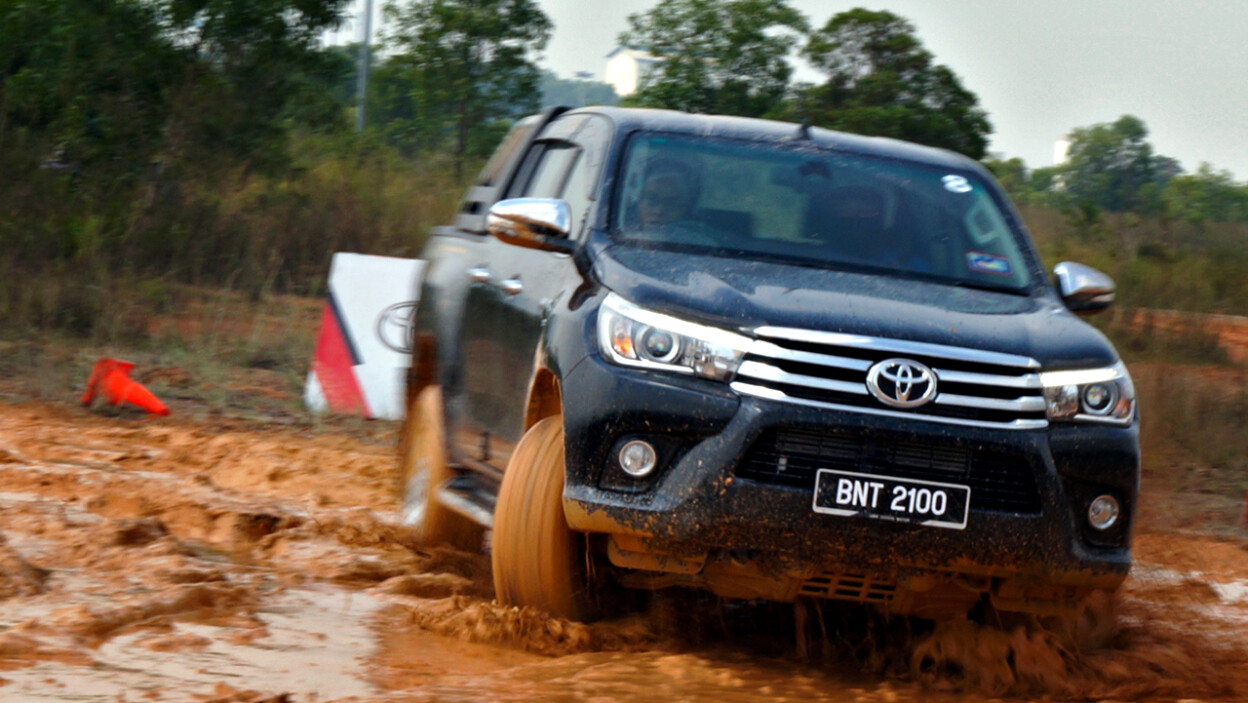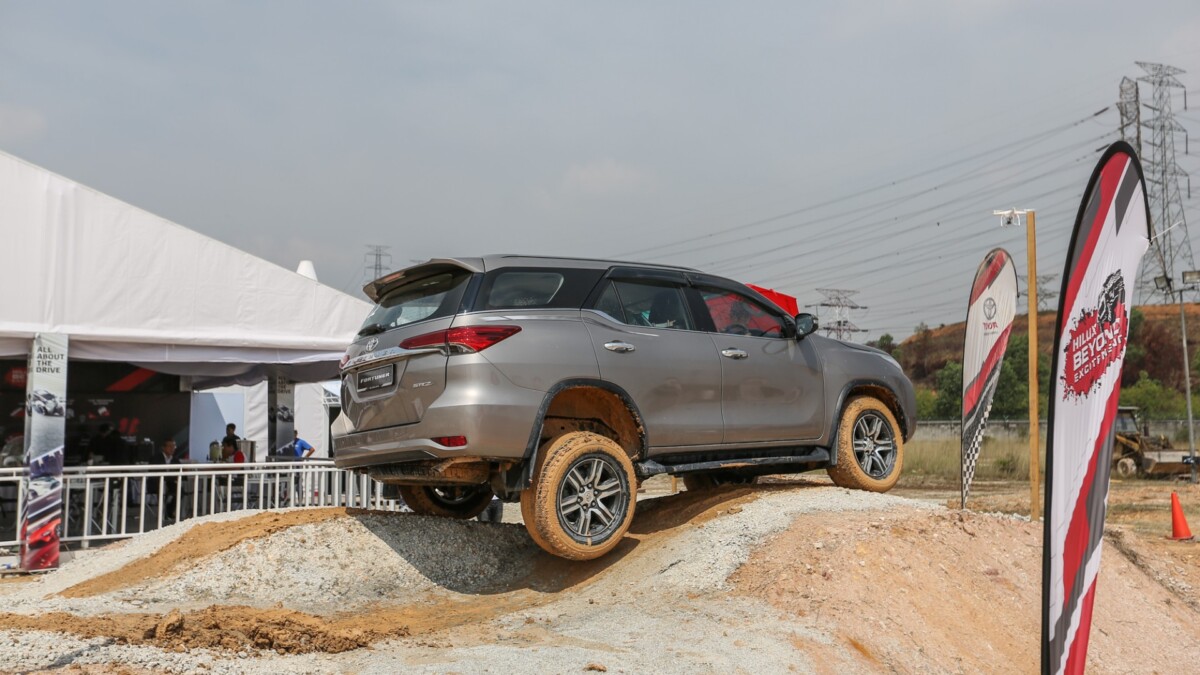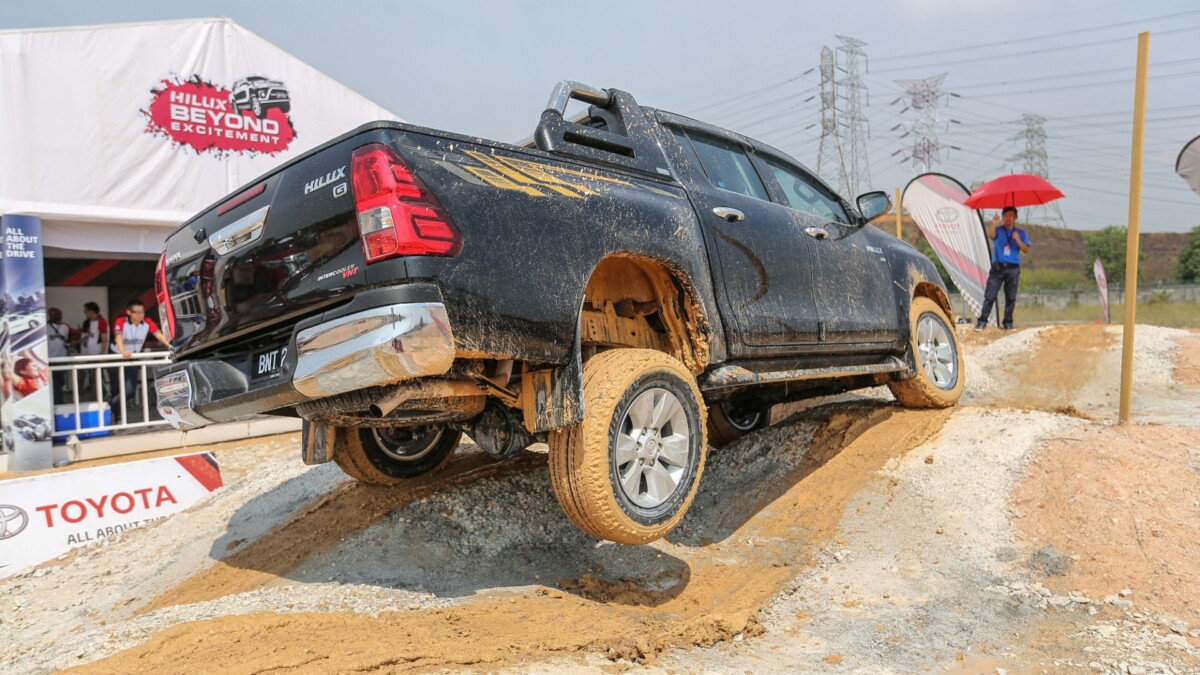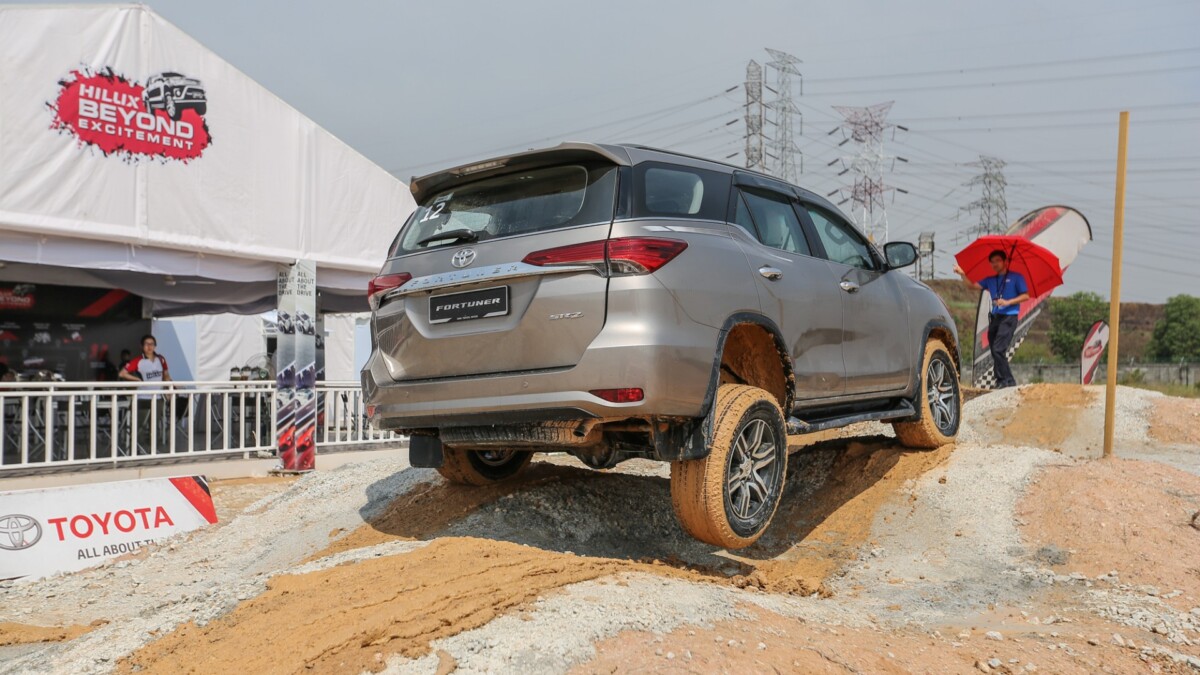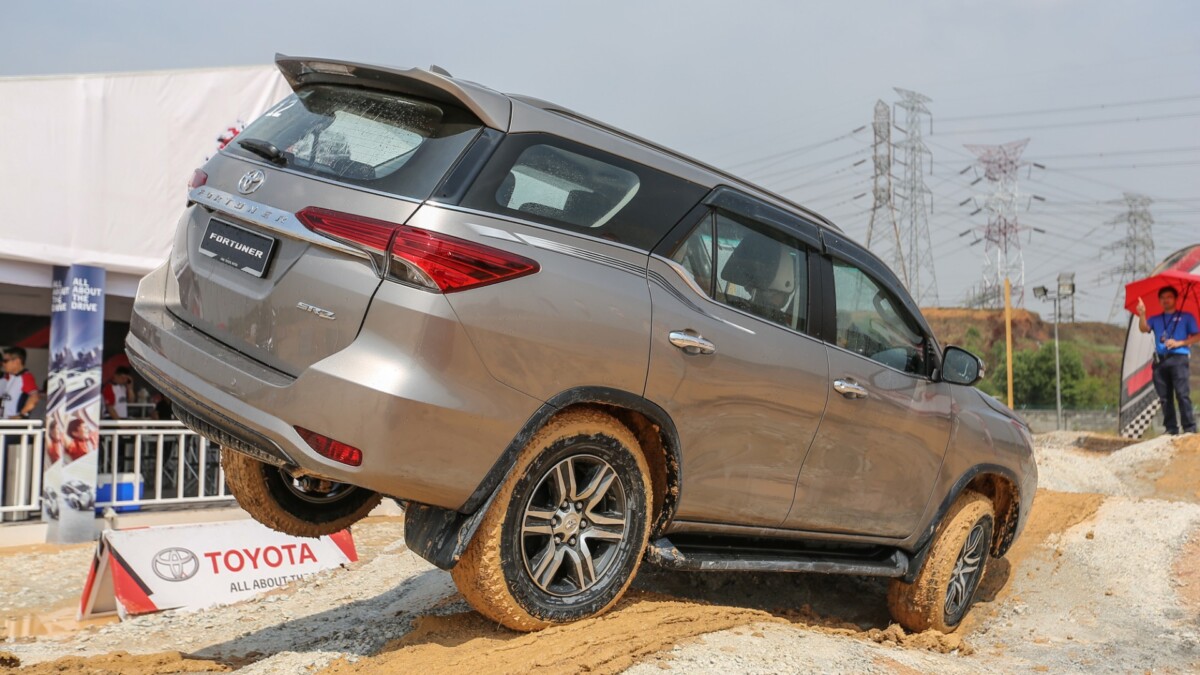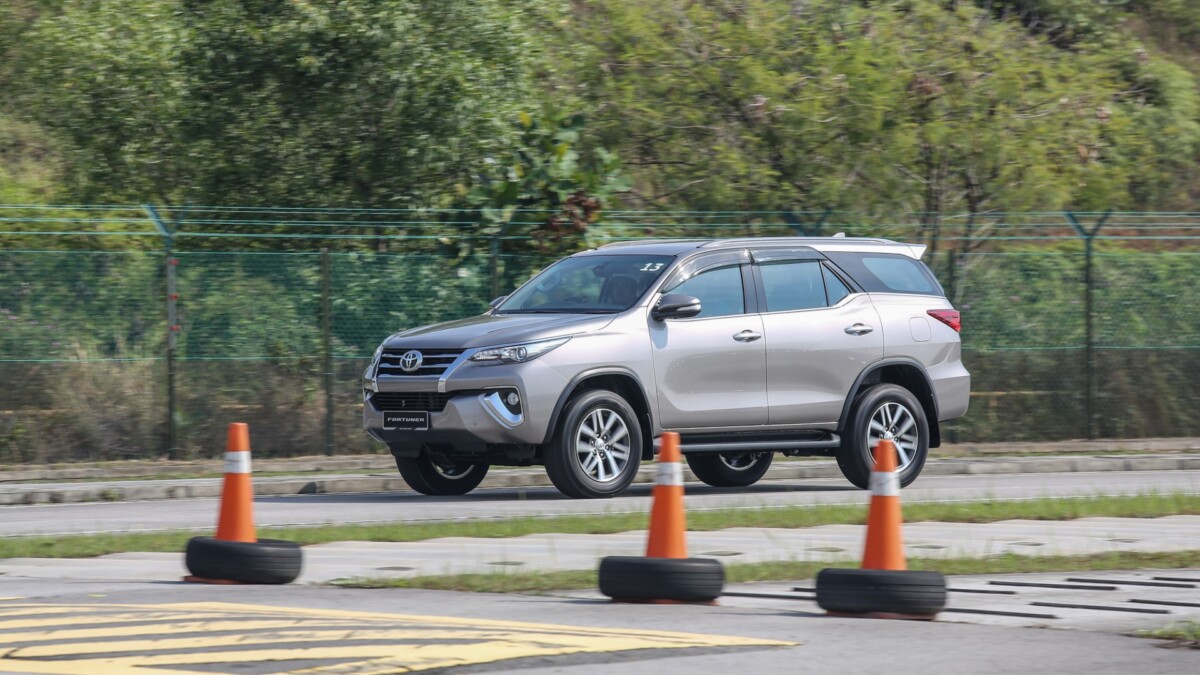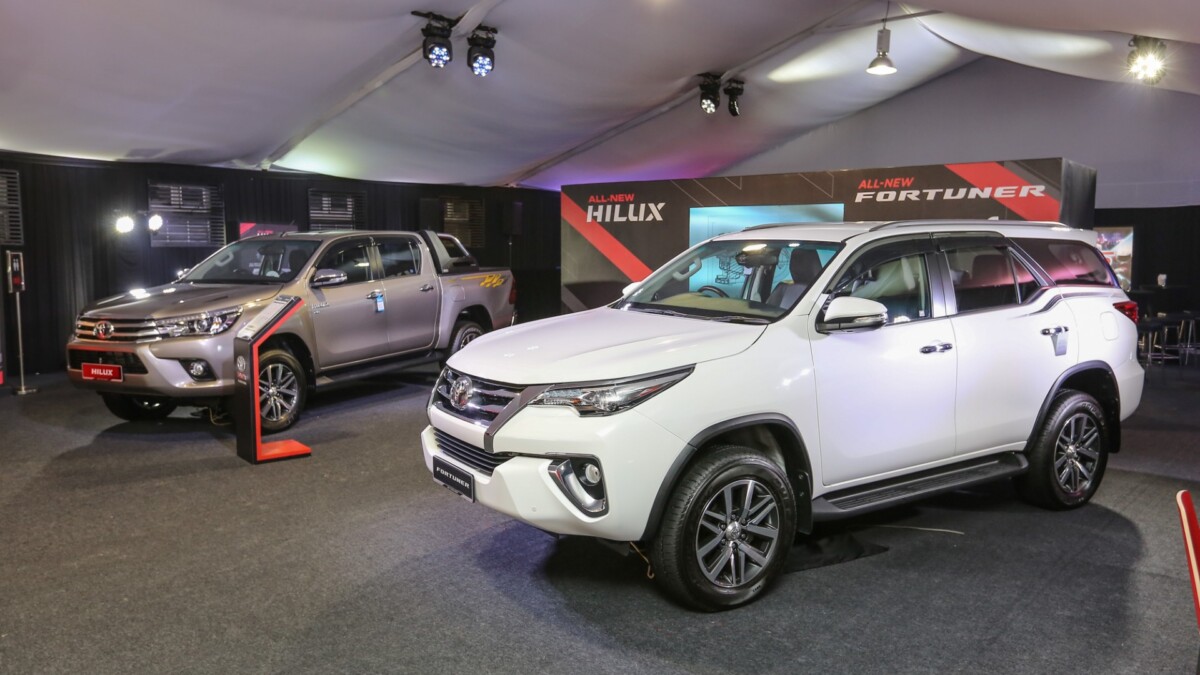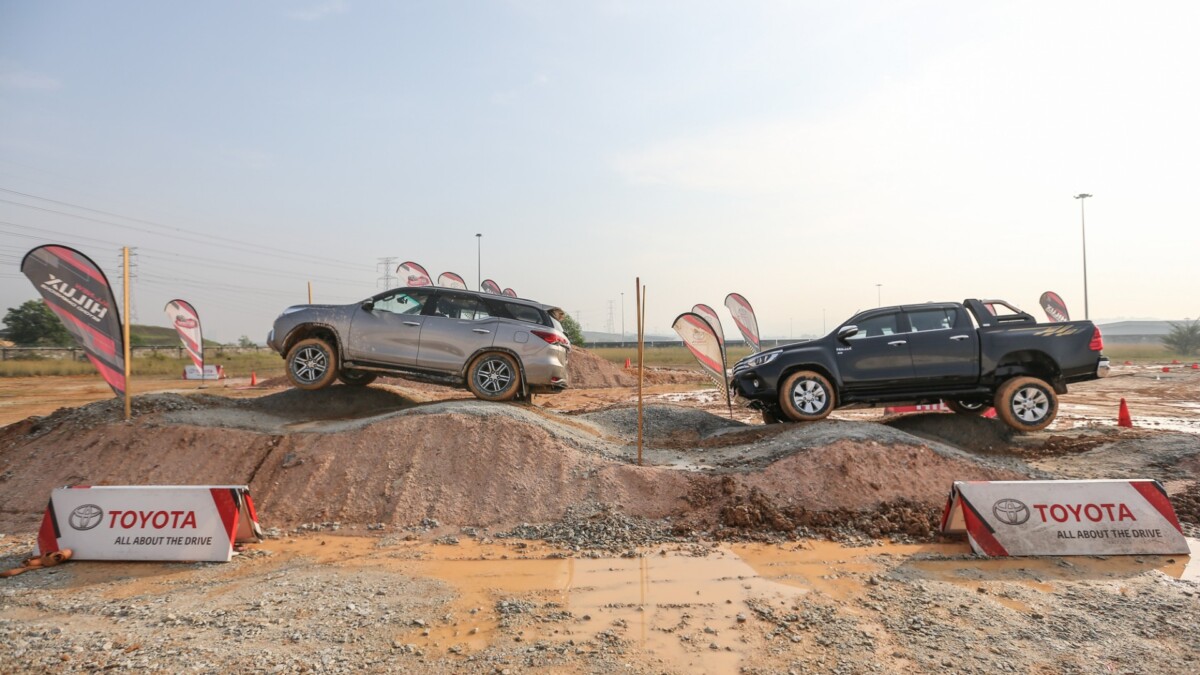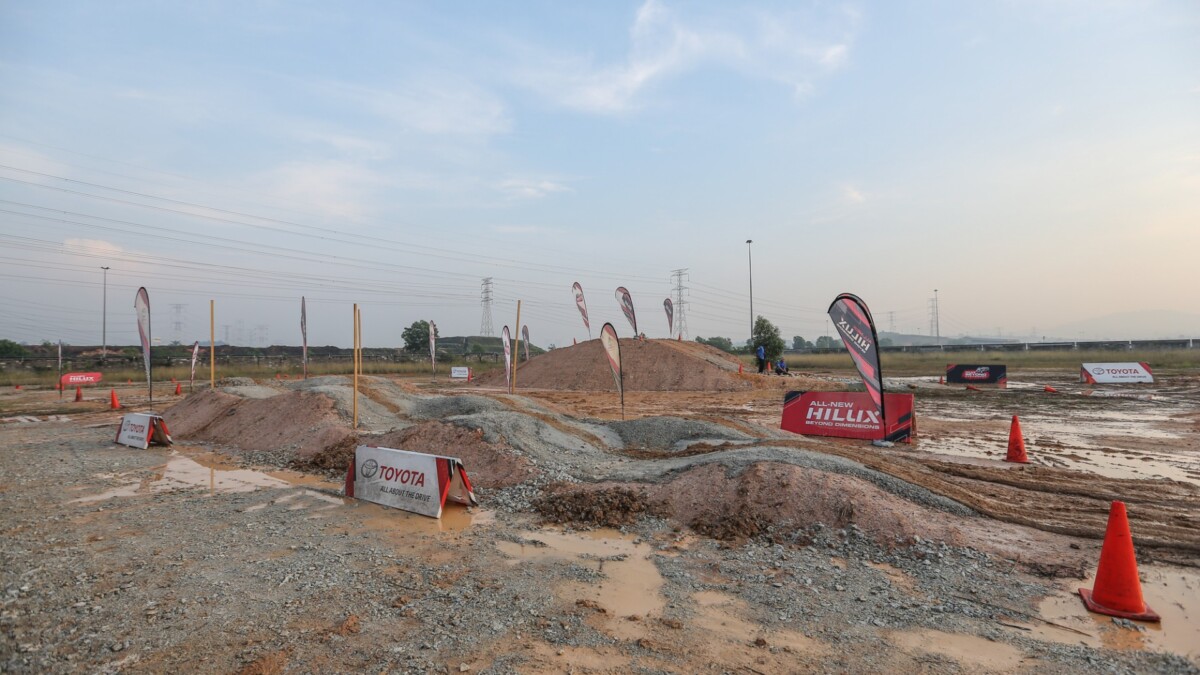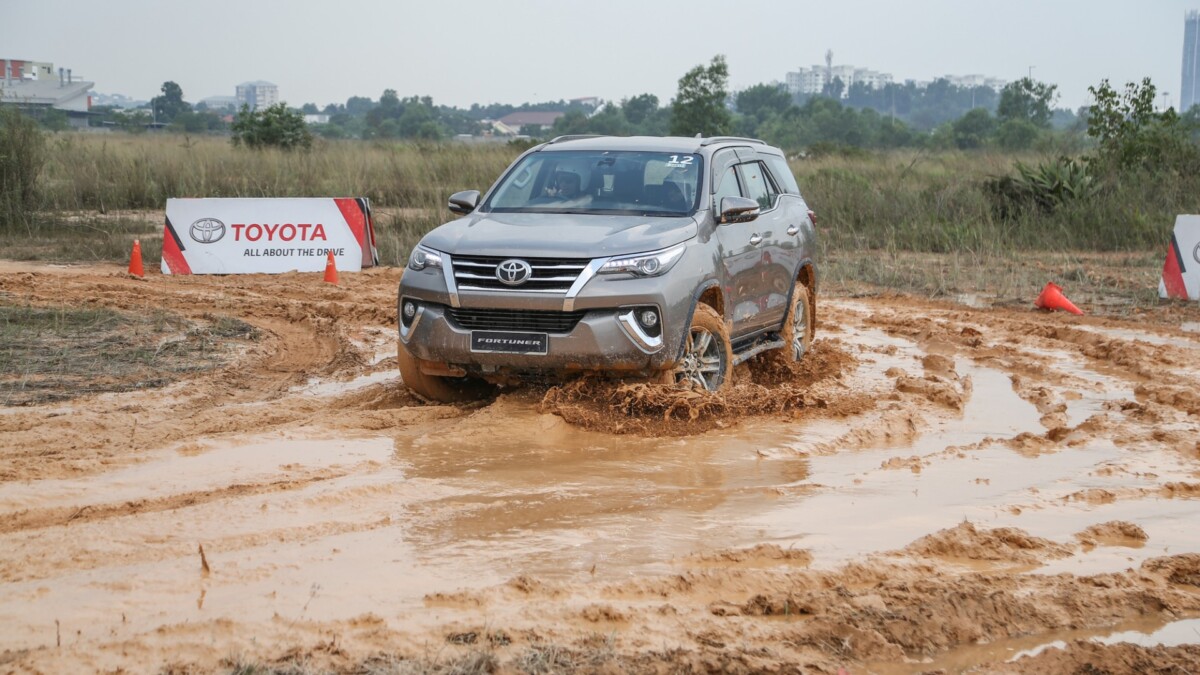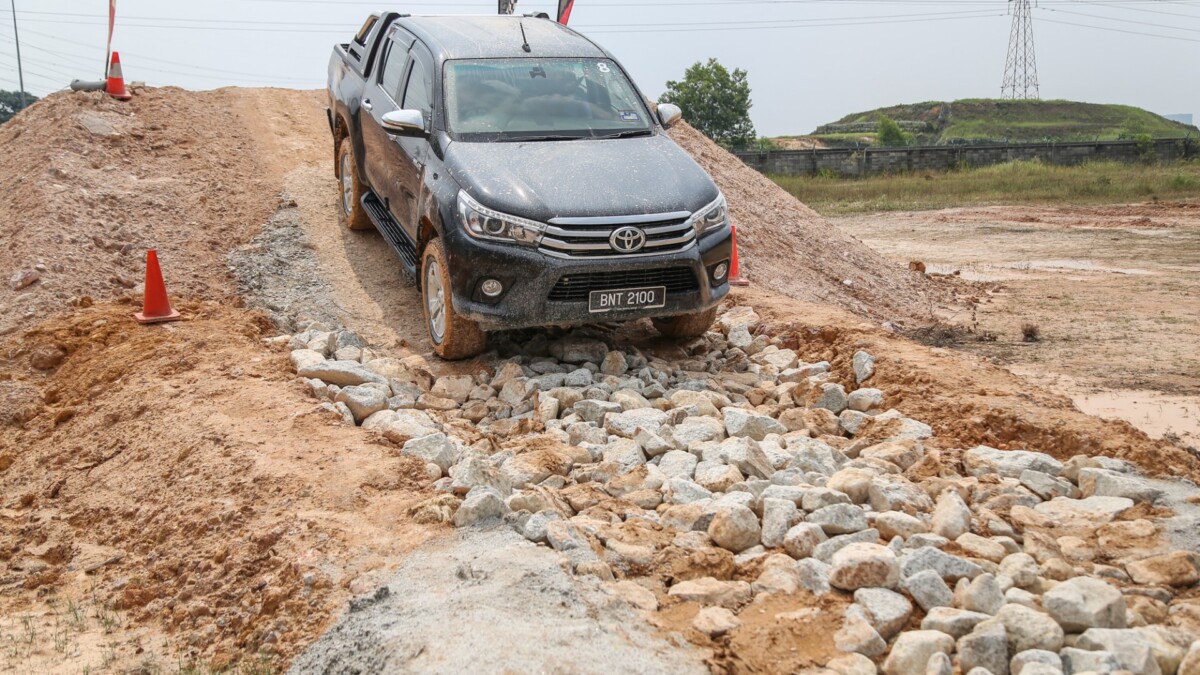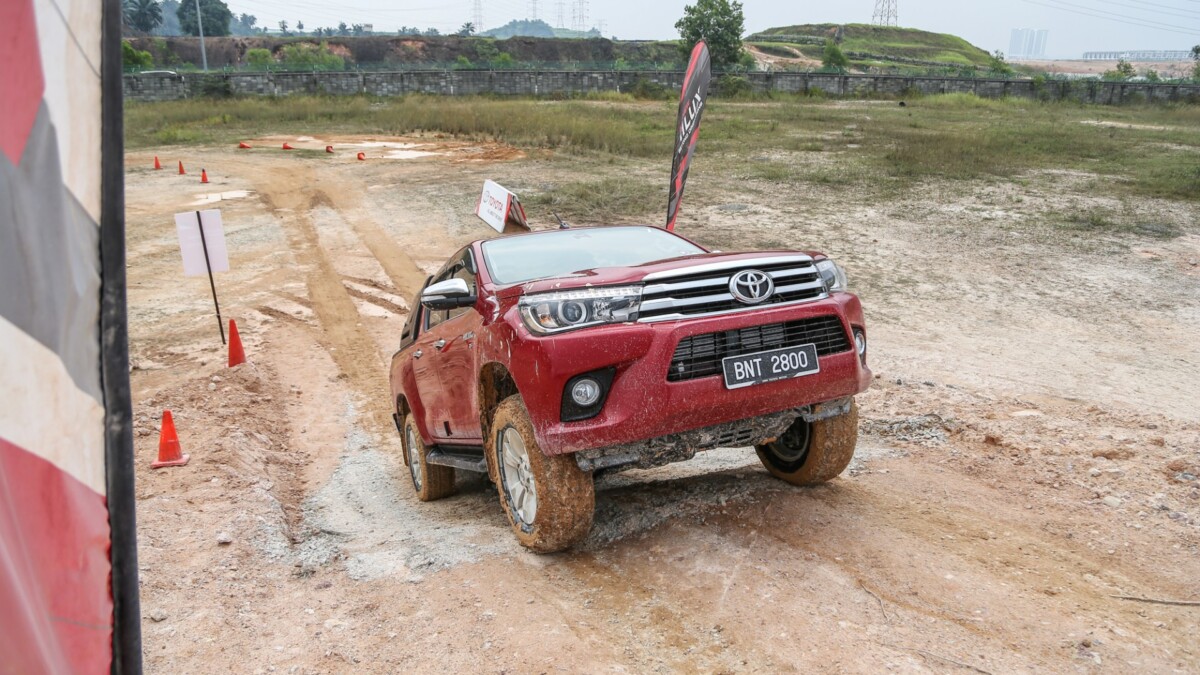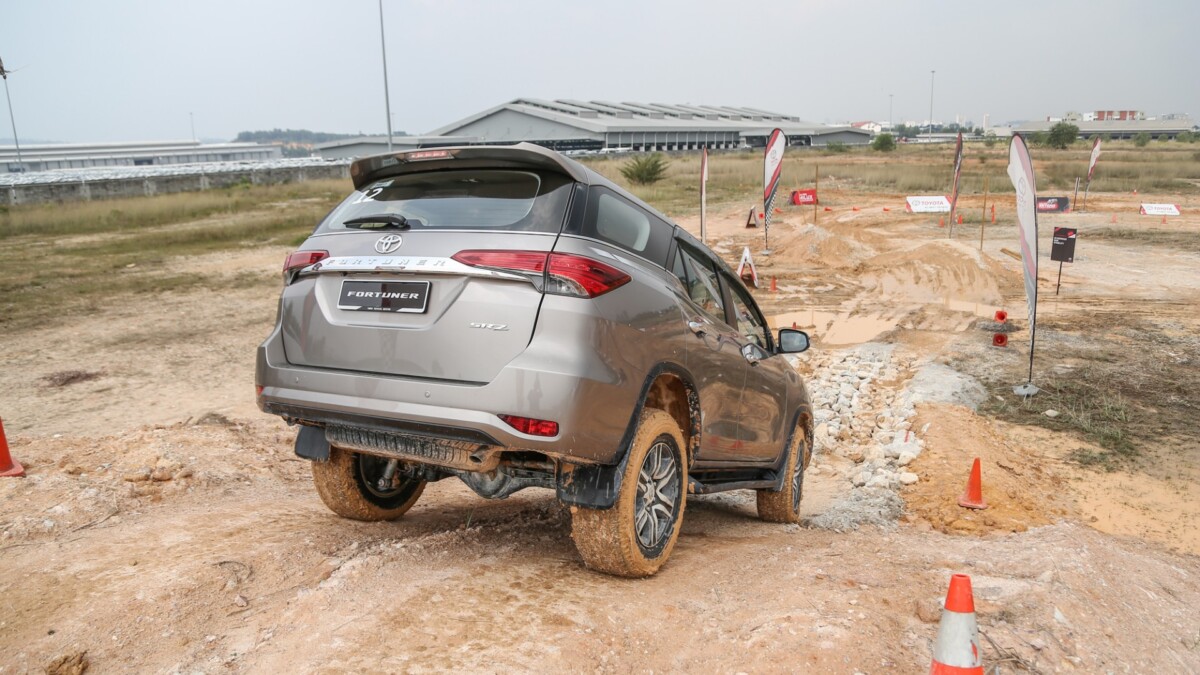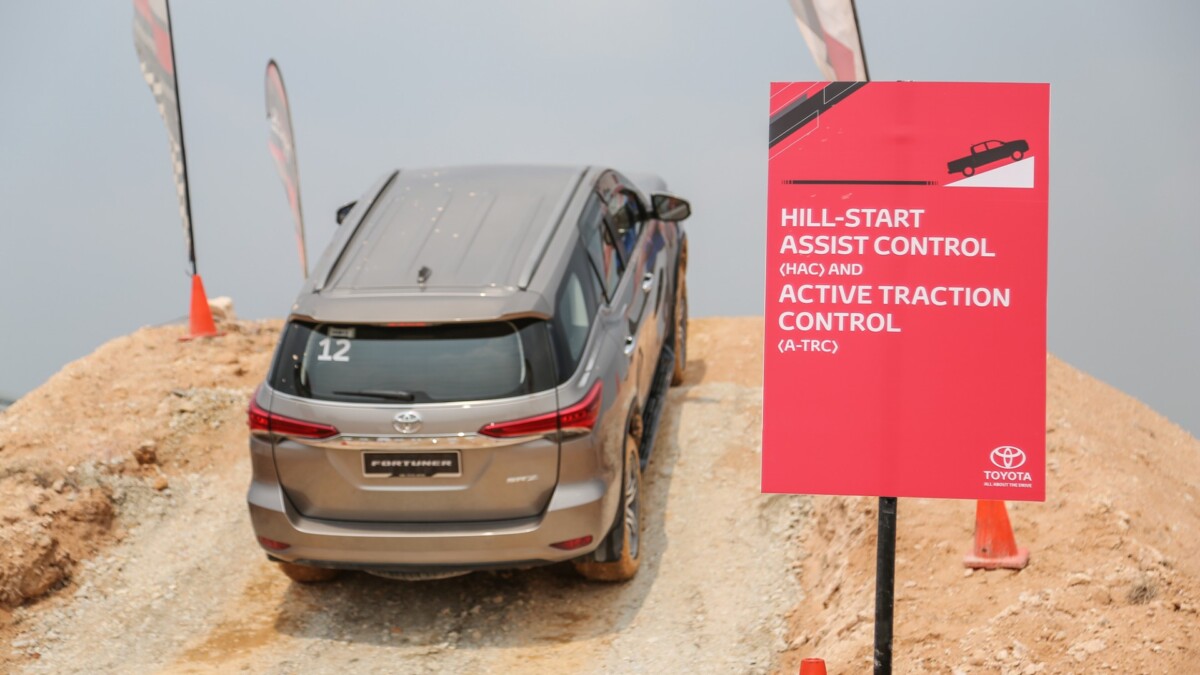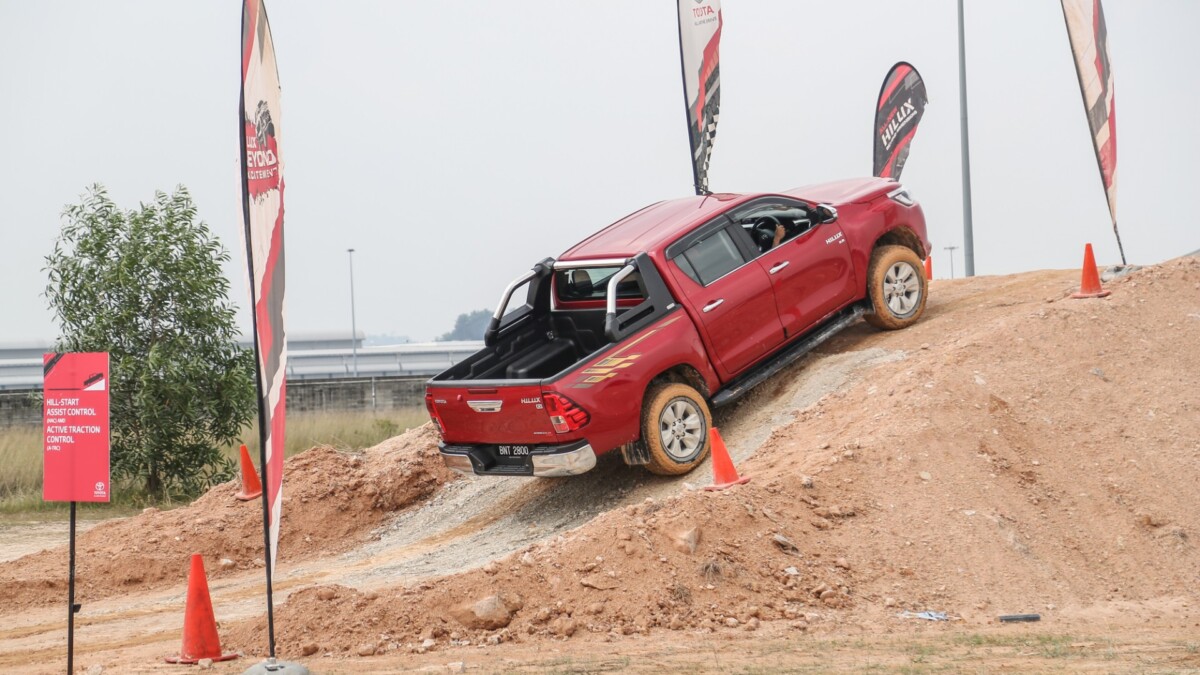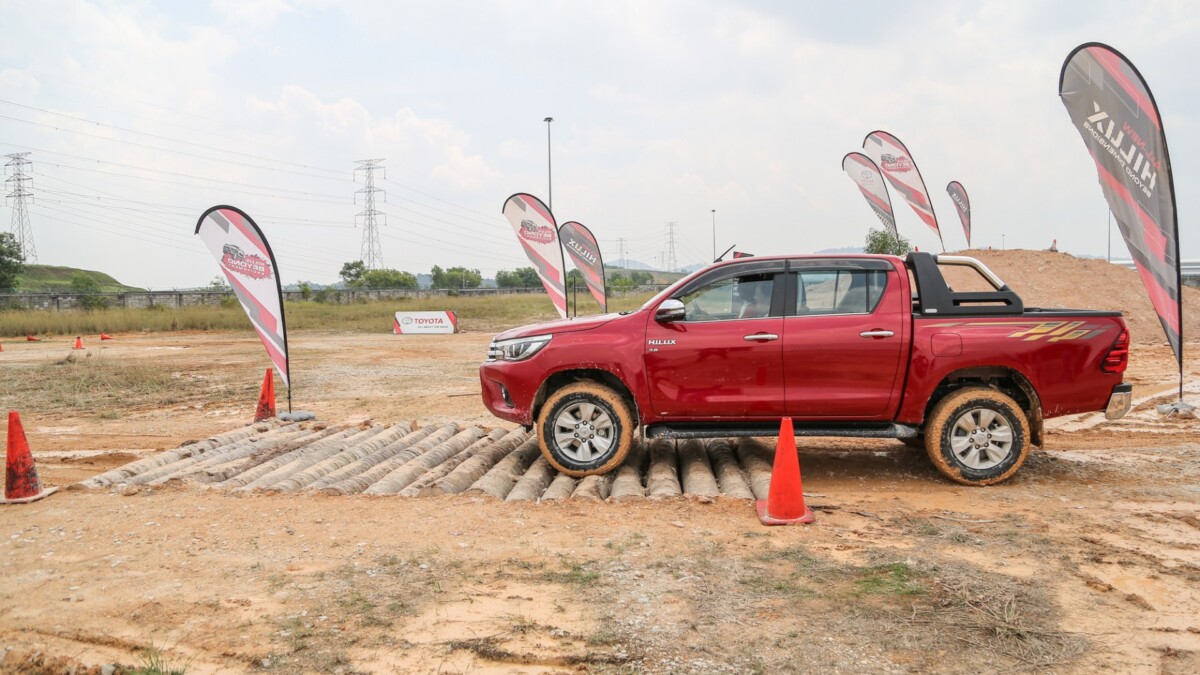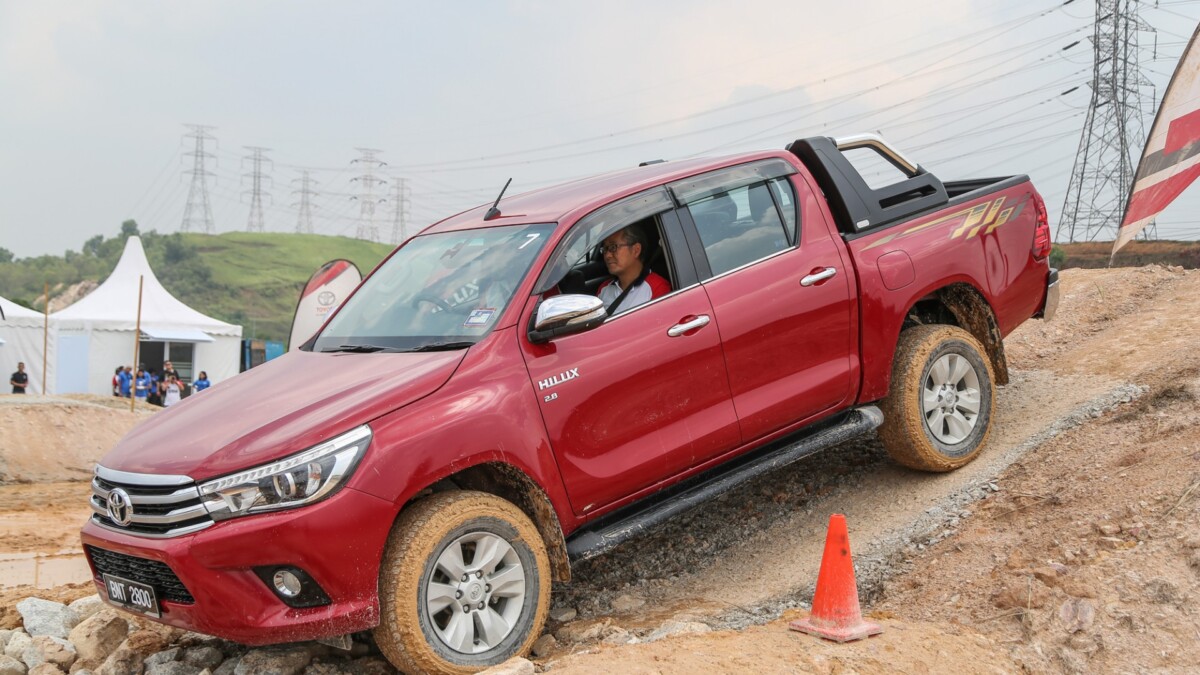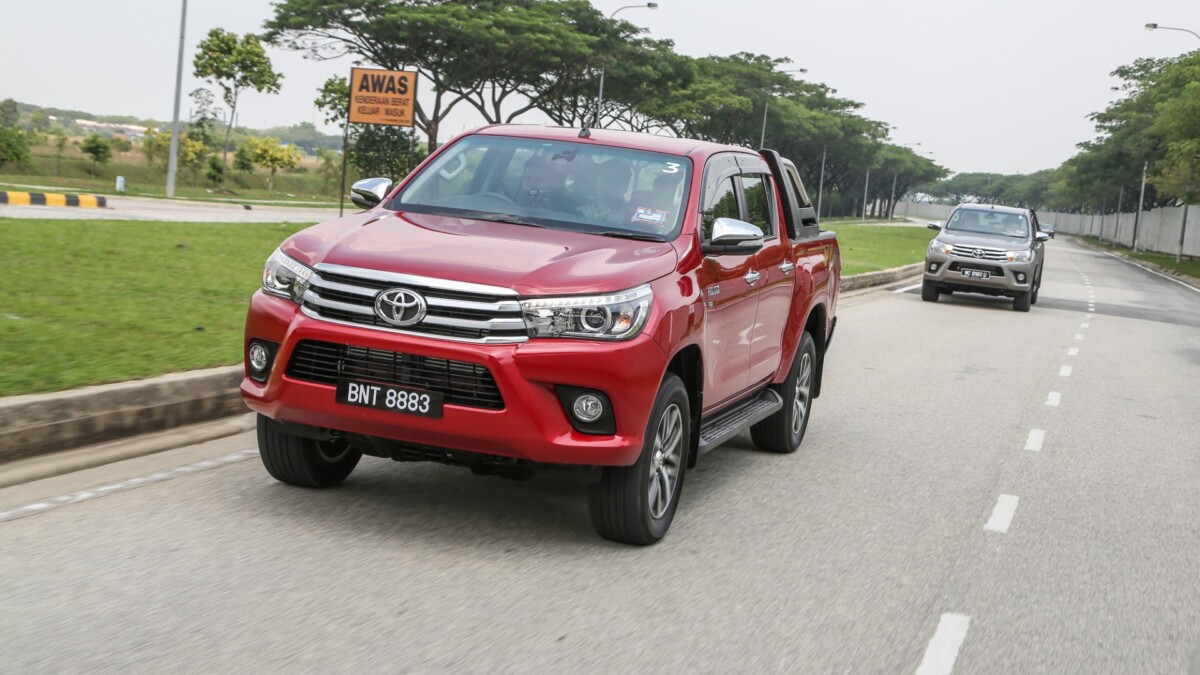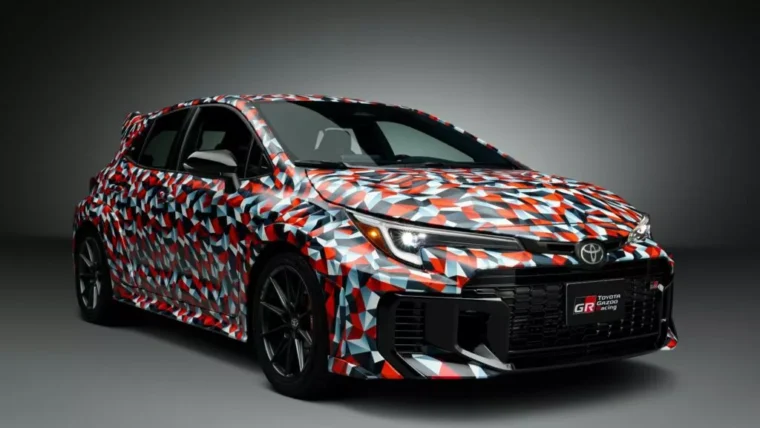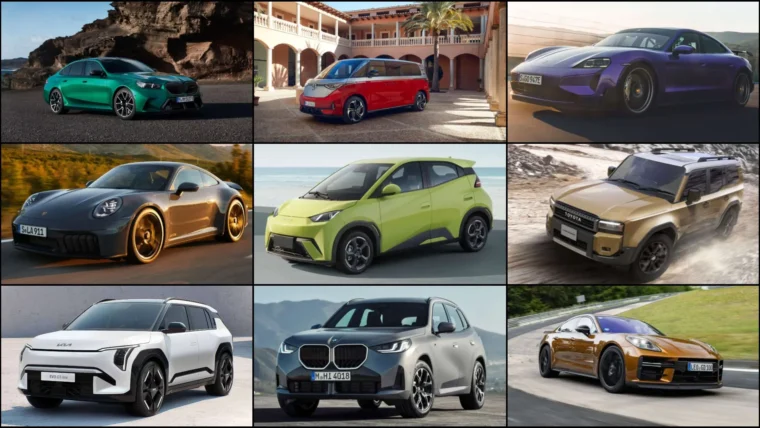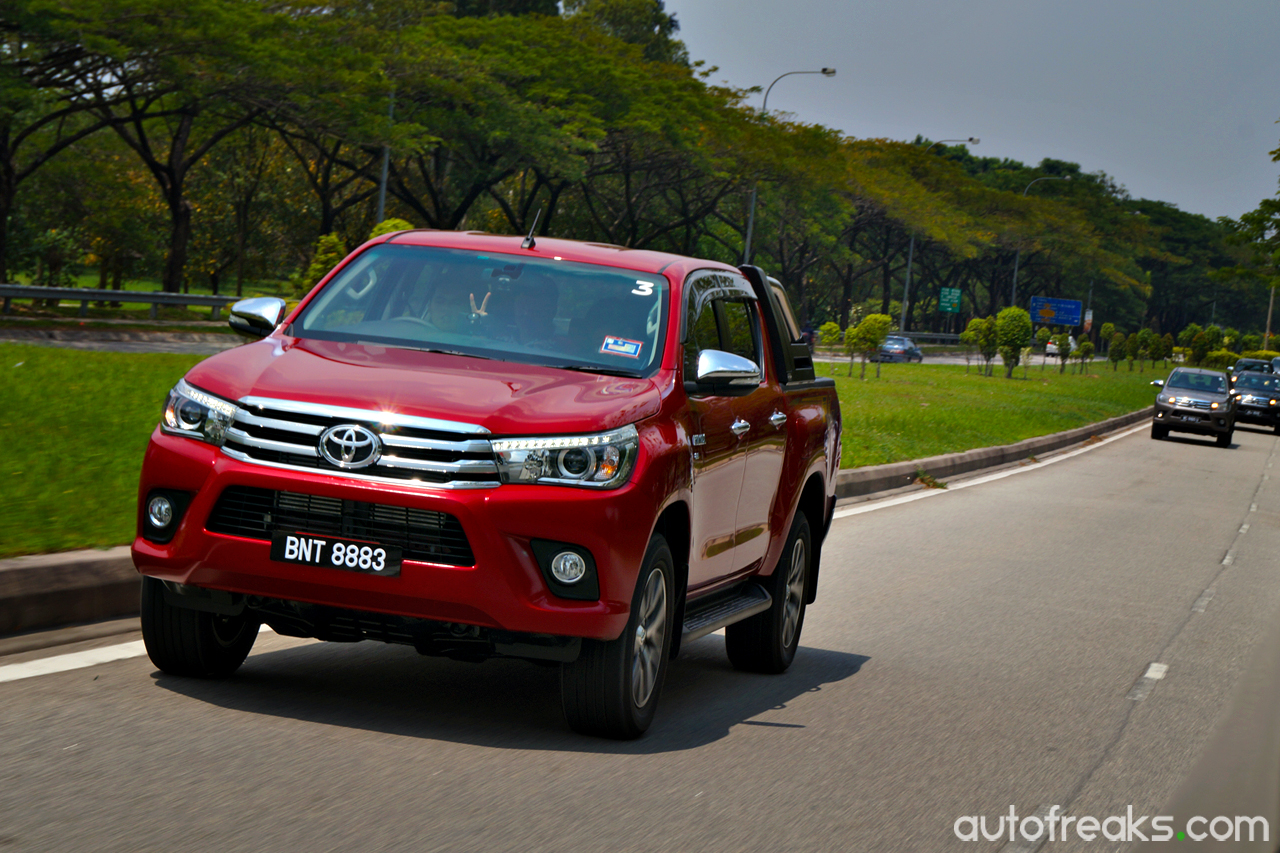
In this part of the world, pickup trucks and SUVs are amongst the driving force for a company’s sales figures. UMW Toyota Motor recently unveiled not one, but two new additions to their stables. We had a chance to briefly sample the eighth-generation Toyota Hilux as well as the second-generation Toyota Fortuner.
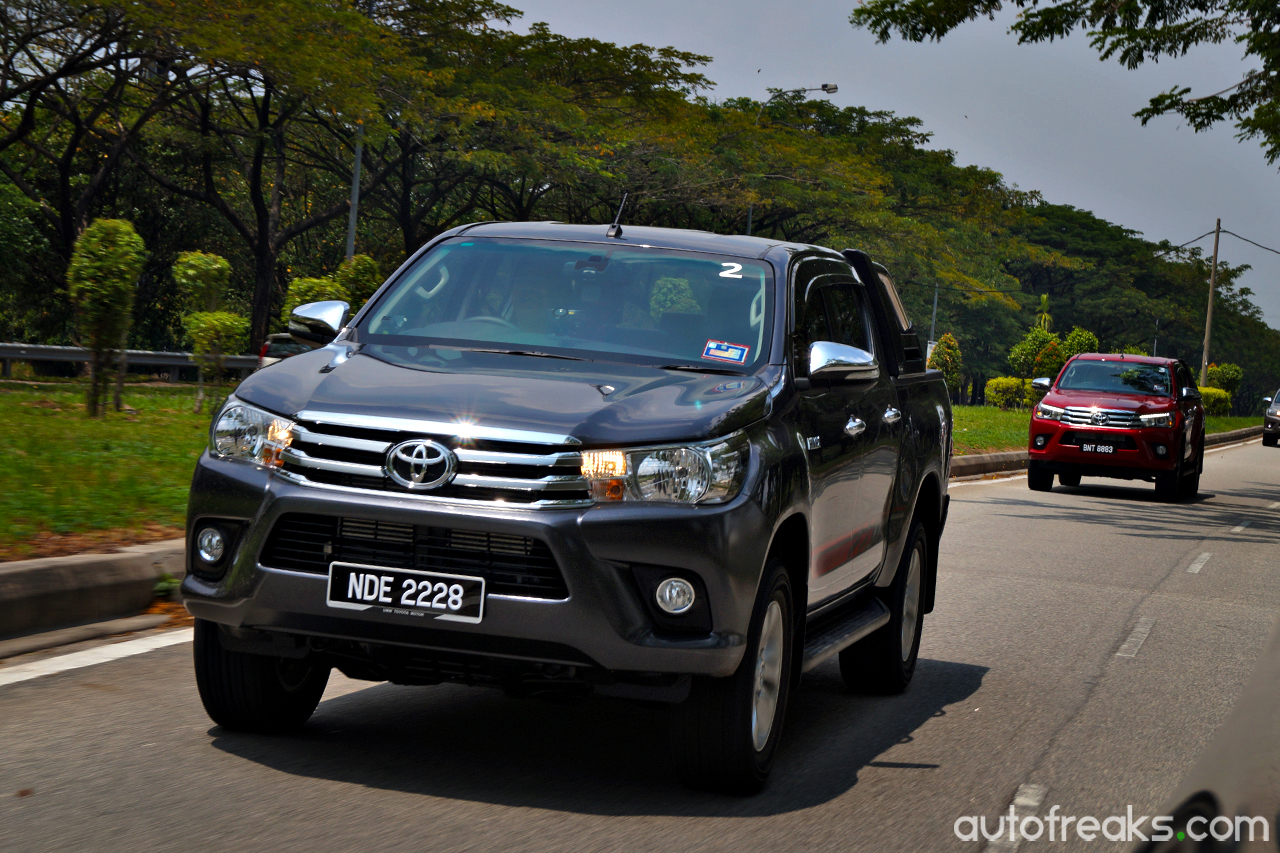
While the nitty gritty of the duo can be found here and here, we won’t delve into that. For this read, we shall focus purely on our first impressions of Toyota’s latest off-roaders.
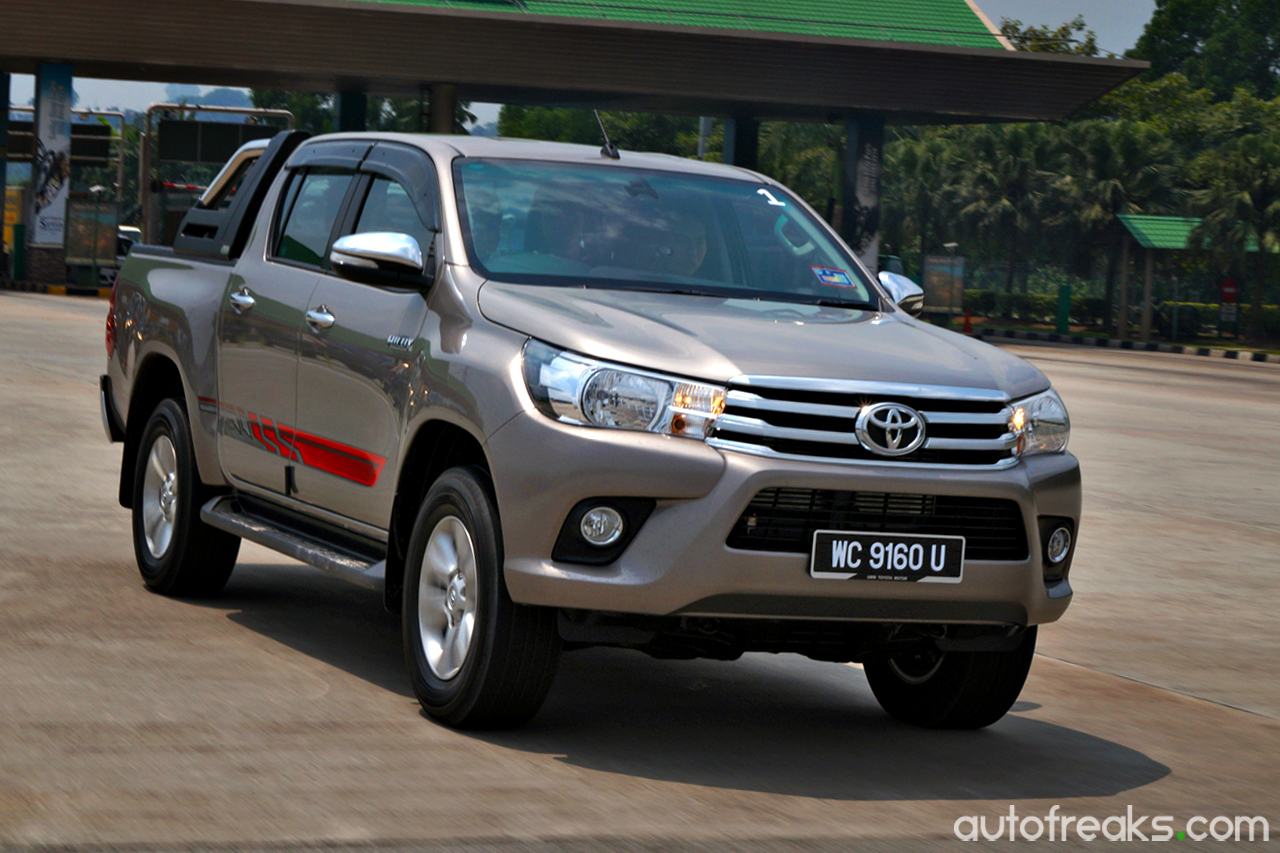
First up, we had a chance to sample the Toyota Hilux 2.4G. The one we sampled comes equipped with Toyota’s new six-speed electronically-controlled automatic transmission. Also new is the 2.4-litre 2GD-FTV diesel engine that produces 150 PS at 3,400 rpm and 400 Nm between 1,600 rpm and 2,000 rpm.
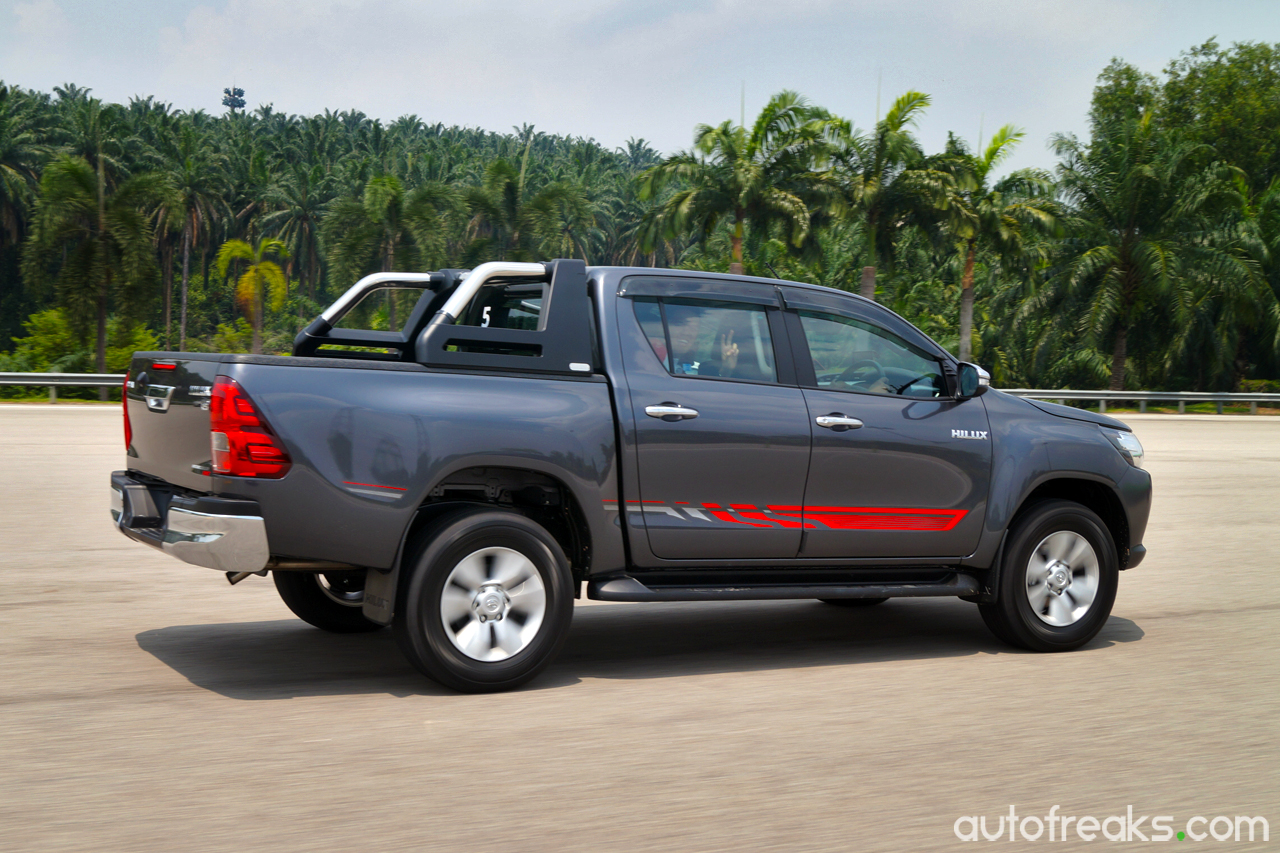
The first test involved driving on UMW Toyota’s test track somewhere in Klang, which gave us a chance to stretch the legs of the pickup on the straights. While accelerating, we noticed that the new gearbox, with an additional two ratios over the outgoing model, provided acceptably smooth shifts, while the healthy 400 Nm of torque certainly helped push the two tonne pickup effortlessly. Wind noises were also very well insulated, a common shortcoming of such vehicles.
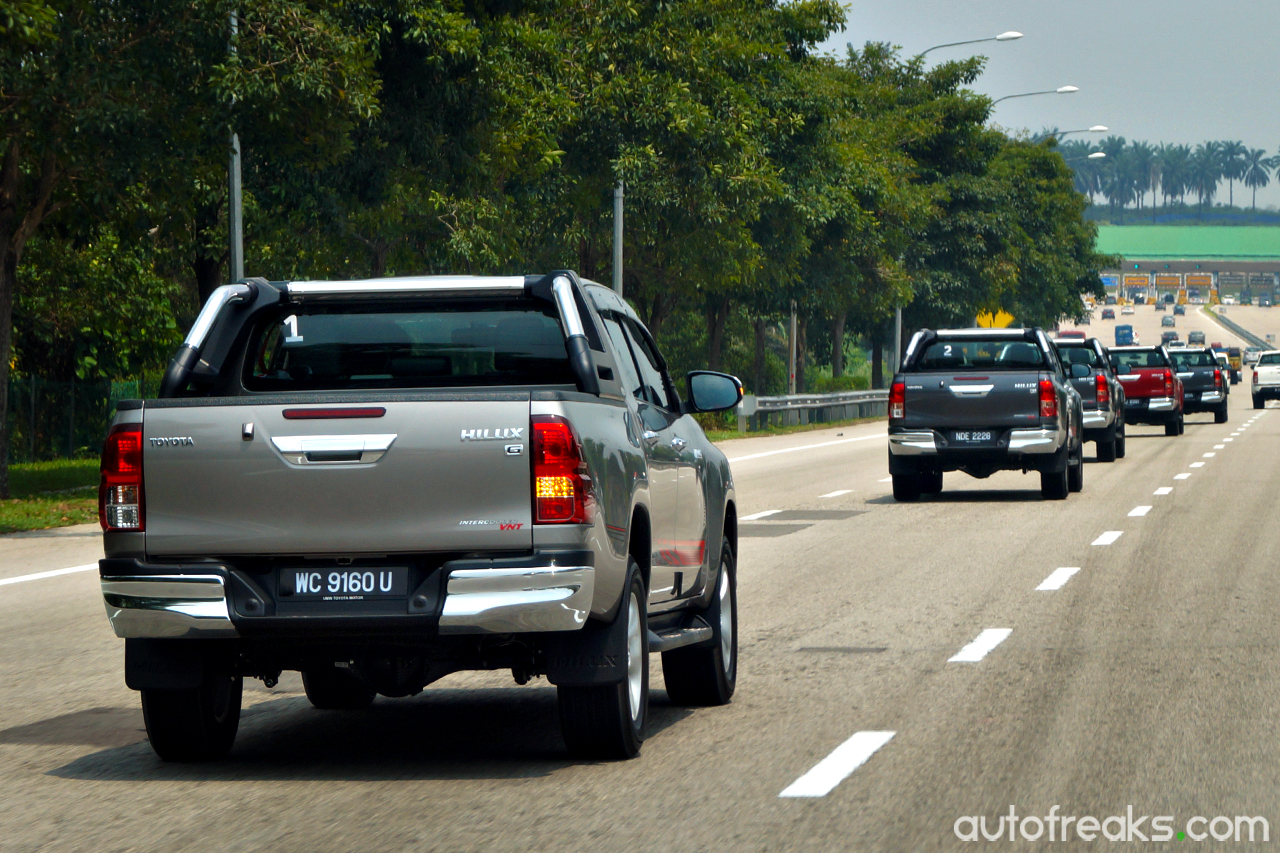
Our second stint involved the range-topping Hilux 2.8G. This new 2.8-litre 1GD-FTV engine replaces the outgoing model’s 3.0-litre block, though with 9% more power and 31% more torque. The new engine provides 177 PS at 3,400 rpm and 450 Nm from 1,600 rpm to 2,400 rpm and can be had exclusively with Toyota’s new six-speed automatic.
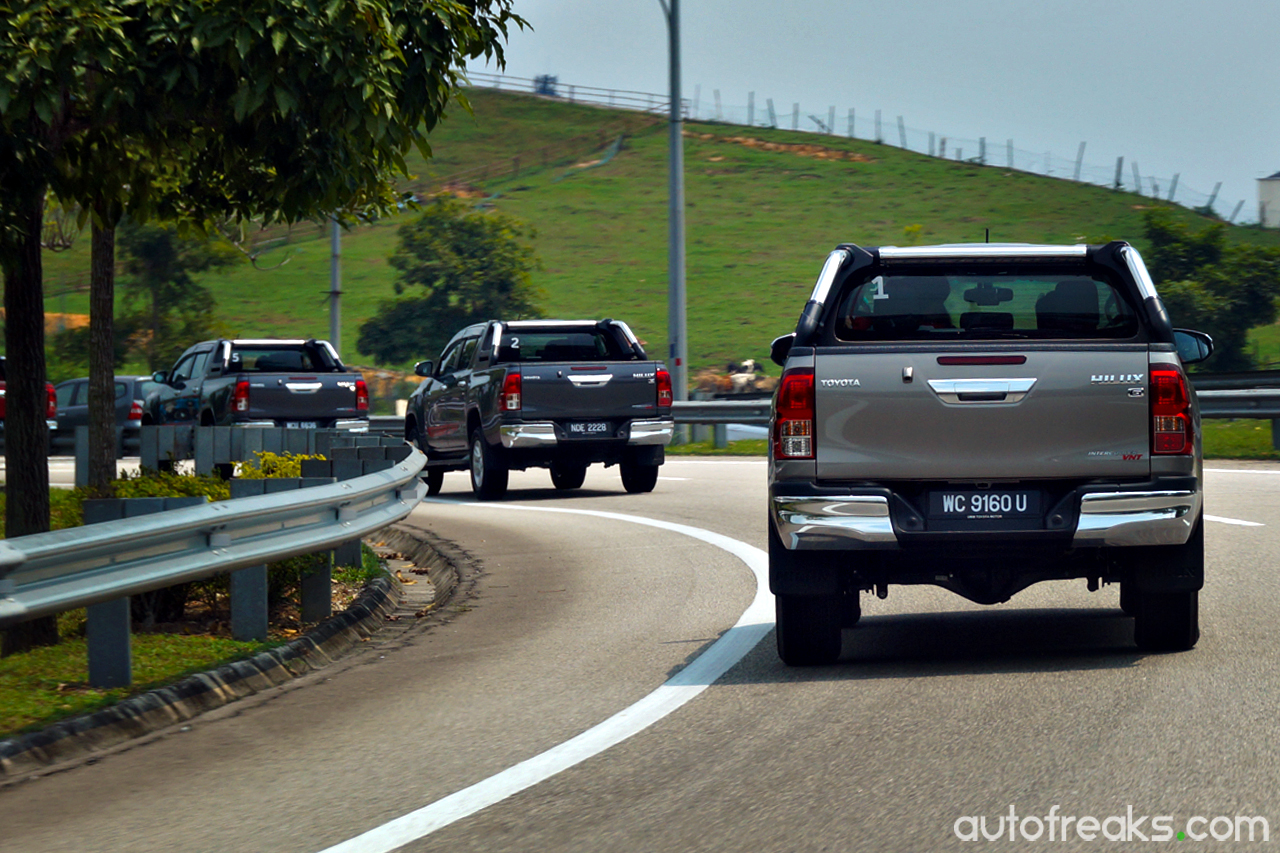
The extra 50 Nm of torque, despite looking insignificant on paper, does provide an extra punch while on the move. Acceleration is stronger than the lesser models, though both Hilux models seem to struggle to reach the 140 km/h mark before the track ends. We reckoned that the engine requires additional miles to loosen things up.
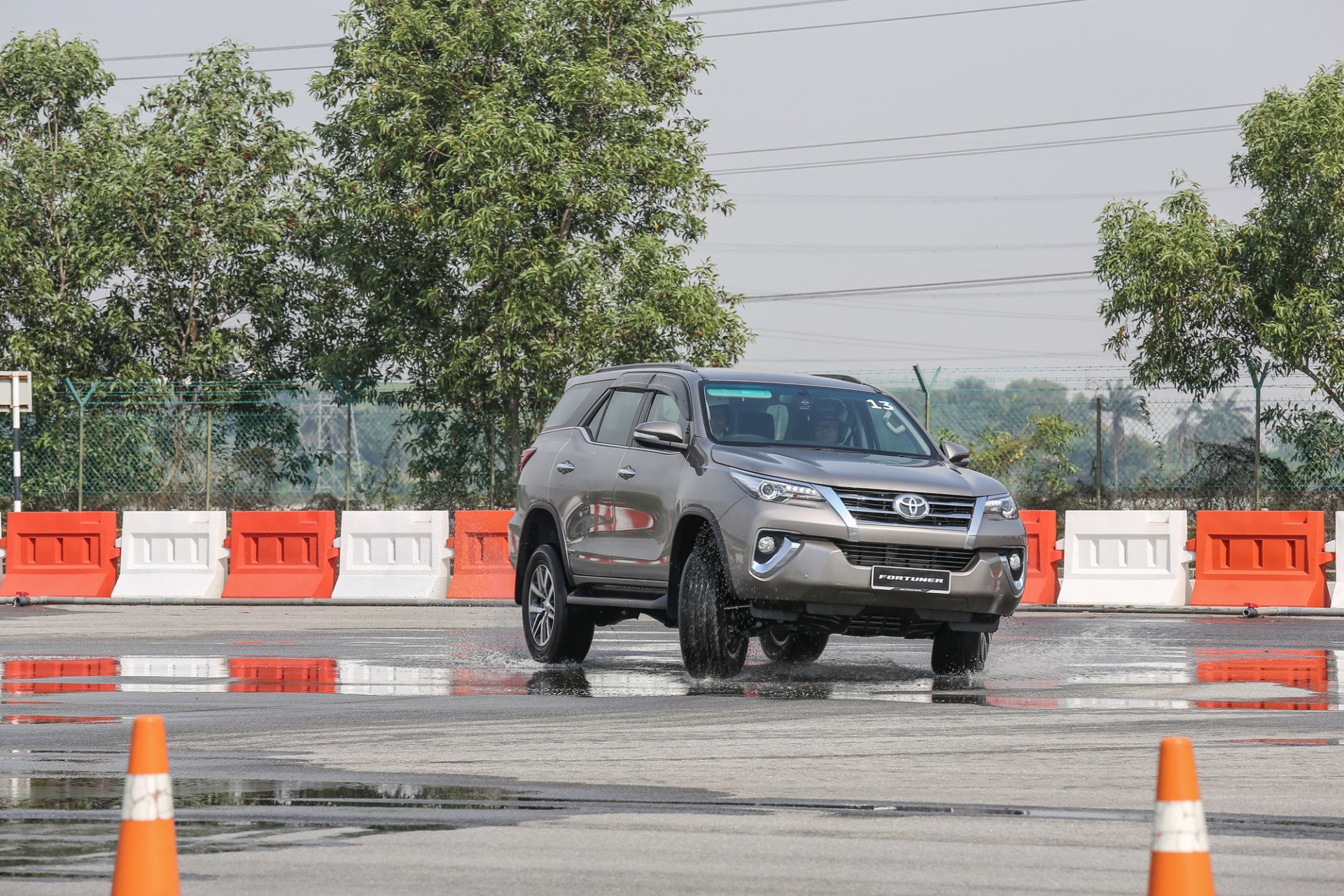
The third stint on the same track involved the Toyota Fortuner 2.7 SRZ. This is the sole petrol variant in the Fortuner line up, and it is also the range-topping variant. While the 2.7-litre petrol engine continues to power the Fortuner, Dual VVT-i is now present. Total power output from the 2.7-litre engine is 166 PS at 5,200 rpm and 245 Nm at 4,000 rpm. Like the Hilux sibling, the Fortuner also gets the identical six-speed electronically-controlled automatic transmission.
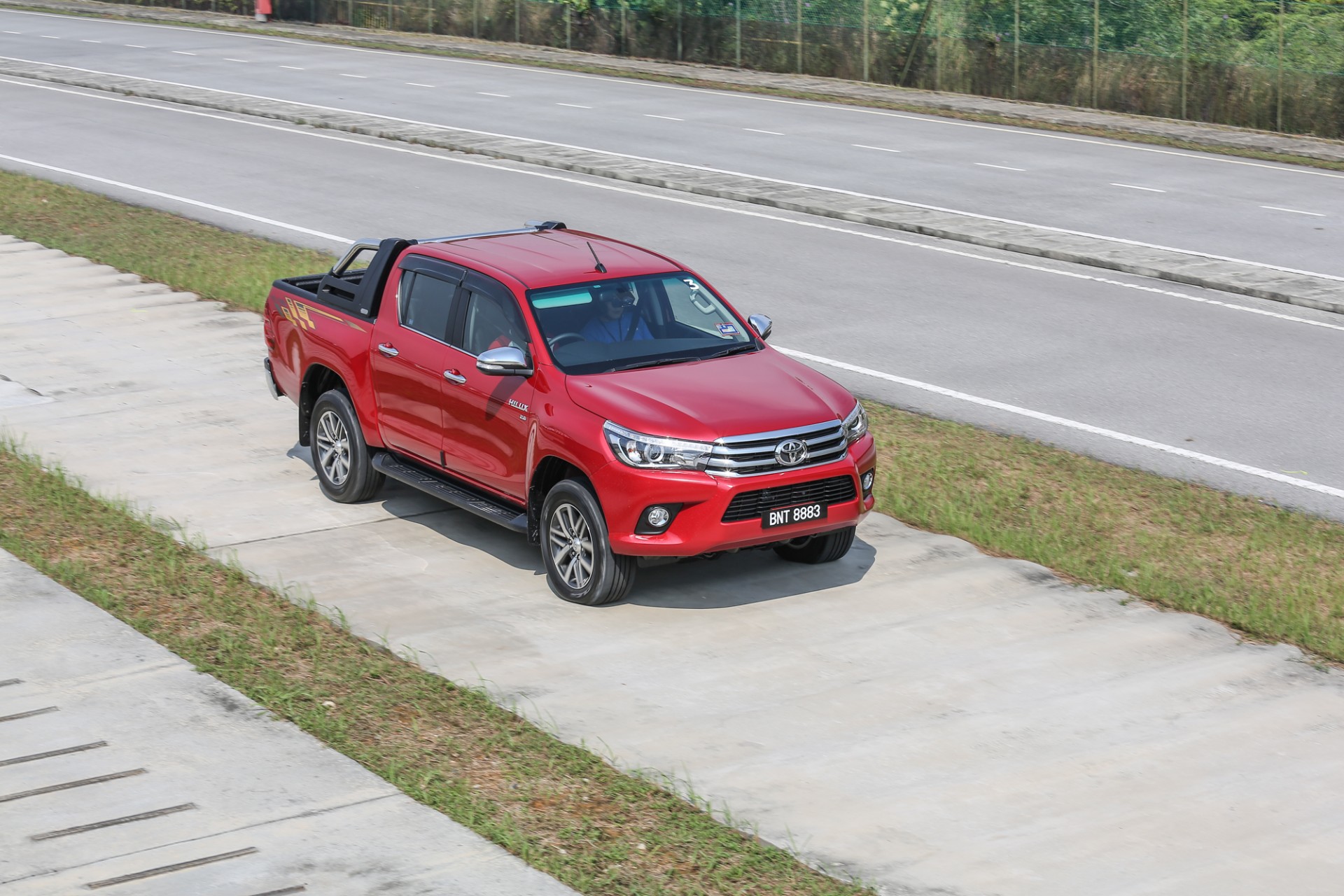
On the move, the Toyota Fortuner is just as refined, if not better, than the Hilux its based on. The petrol engine, while it lacks the torque its diesel siblings can achieve, still manages to lug the large SUV with relative ease. Apart from that, the petrol-powered Fortuner also lacks the diesel clatter that is associated with diesels, which we feel, gives a better impression of refinement.
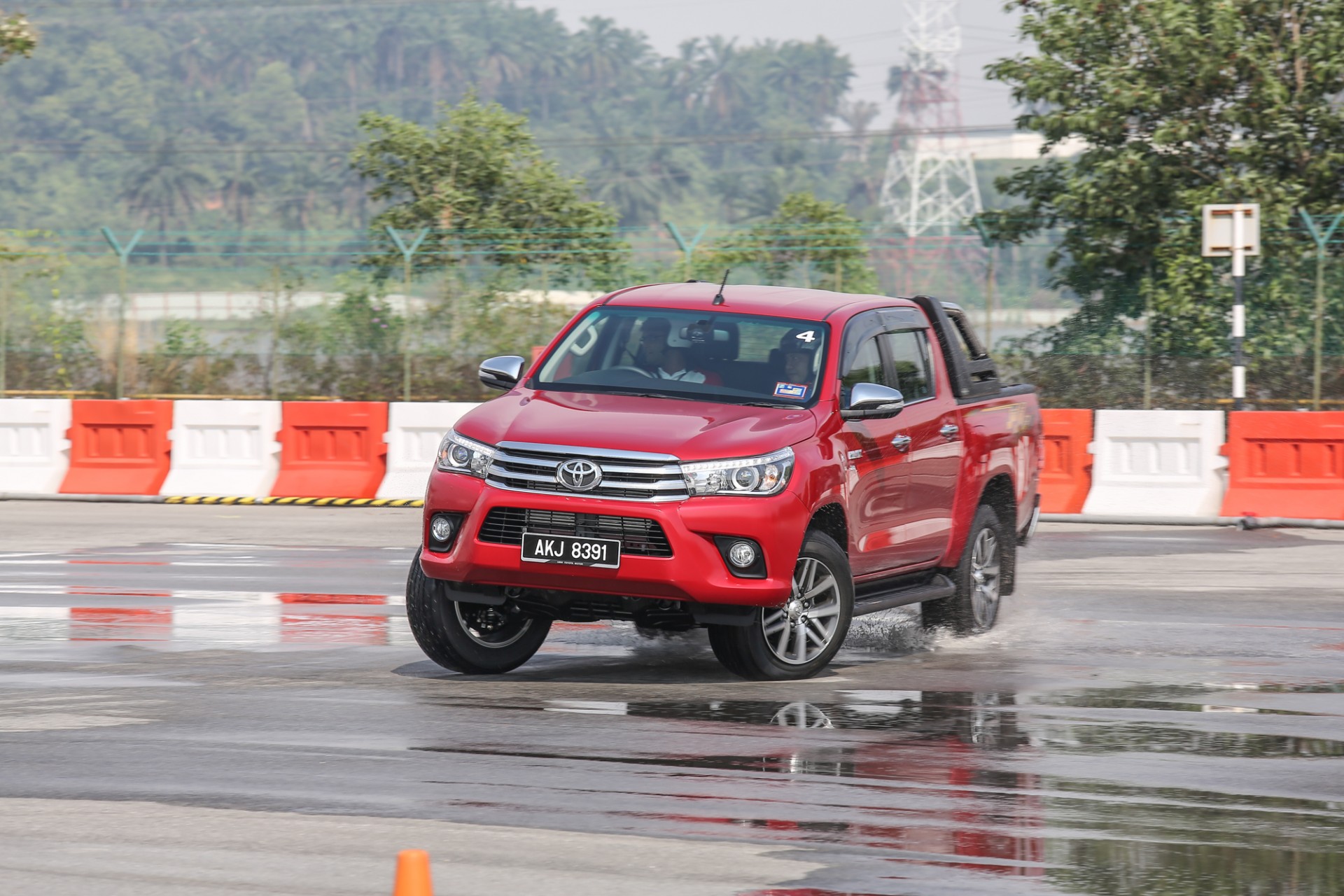
The test track also gave us a chance to test the comfort levels of the Hilux and Fortuner. Unsurprisingly, the Toyota Hilux was decidedly more comfort-biased than the Fortuner. However, the tests were done with just two passengers, and we believe that ride comfort in the Fortuner would be better if there is a heavier load. In addition to that, we also tried out Toyota’s Active Traction Control (A-TRC) which improves traction on slippery road conditions.
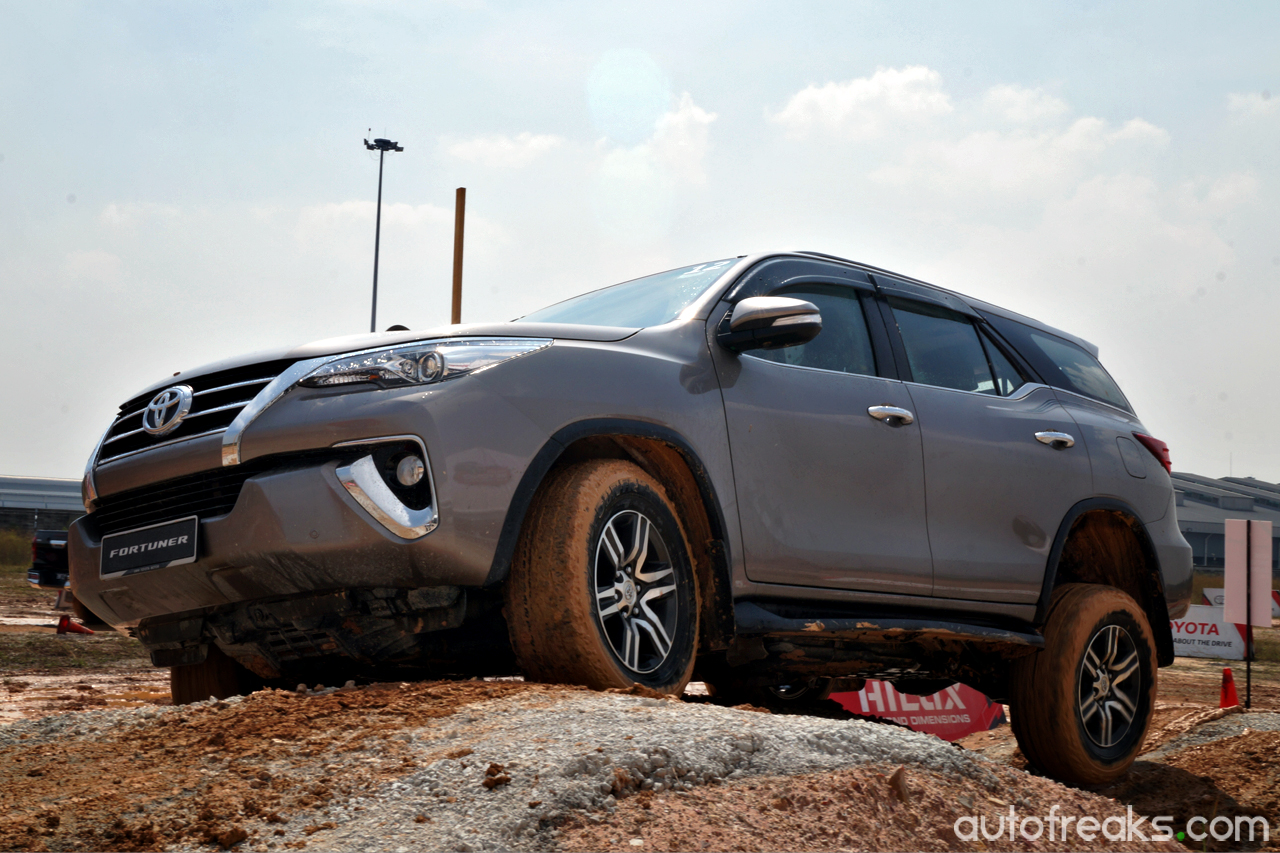
Once we were done with the track tests, we headed for the off-road section. The off-road course was built exclusively to test the capabilities of the new Hilux and Fortuner, including the earlier-mentioned Active Traction Control. The improved wheel articulation, coupled with the A-TRC meant that the Hilux could conquer even the most challenging of terrains, including rocky and muddy terrain with little to no fuss.
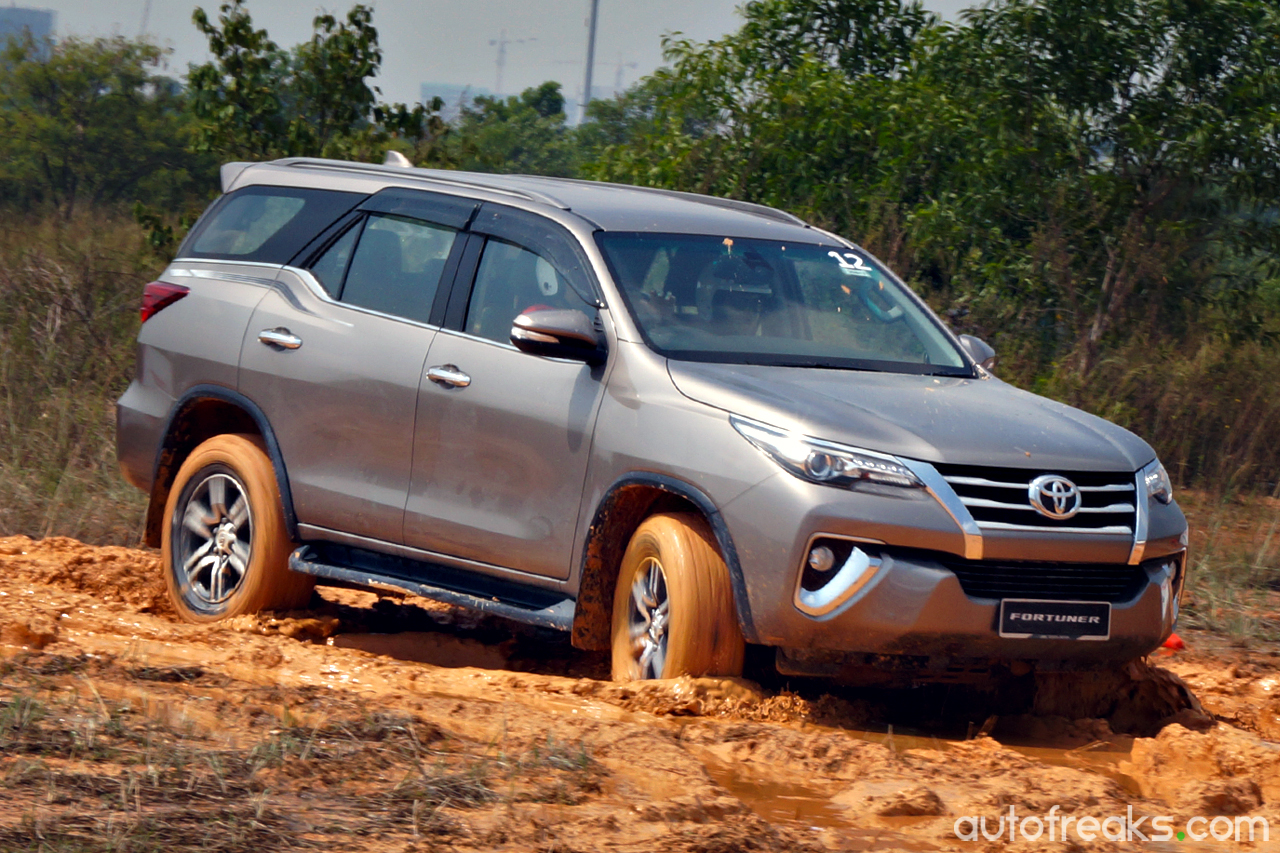
While it was rather painful to watch, both the Hilux and Fortuner conquered the off-road course without any major issues. It was rather interesting to watch the A-TRC in action, with the system sending power to the wheels with traction. The outgoing Hilux, without the A-TRC, was not able to complete the course.
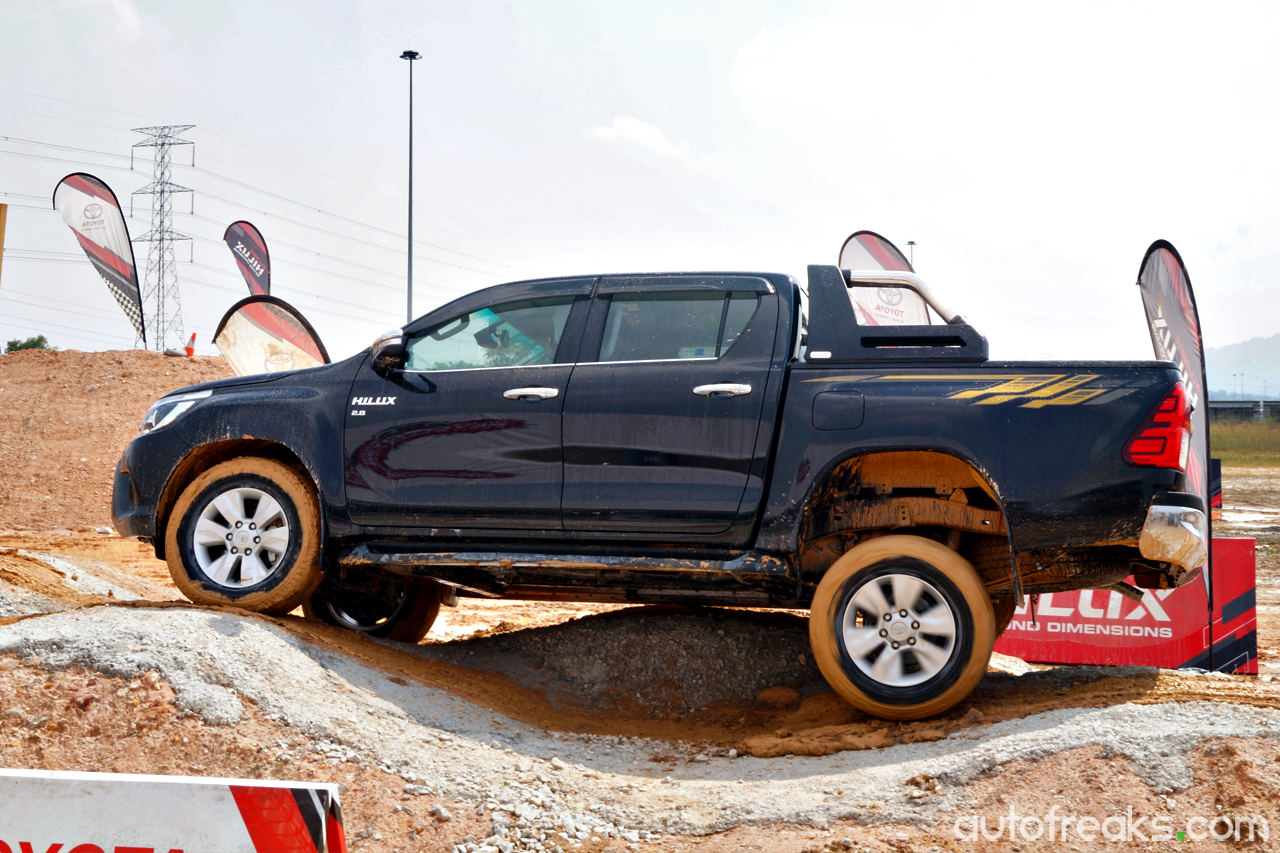
The third and last part of the day was the on-road test. We buckled up into the passenger seat of a Hilux 2.8G. Inside, Toyota has given the Hilux a significantly more plush interior than its predecessor. The interior may not be as luxurious as a Camry, but compared to the outgoing model, urban drivers will appreciate the added amenities, including the eight-way power adjustable driver seat, Optitron meters, leather upholstery and even a chilled upper glove box.
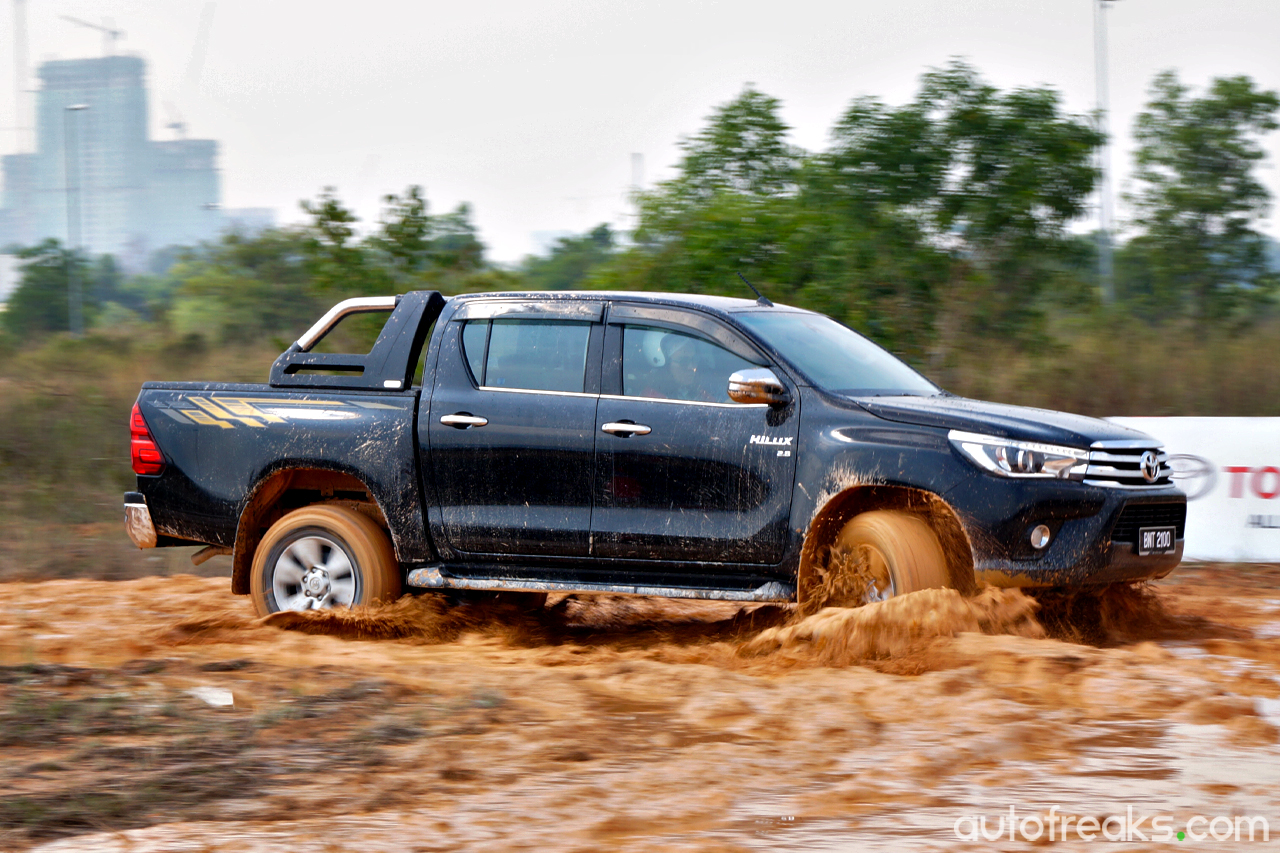
Ride comfort, as we mentioned earlier was decent in the Hilux, though body roll was apparent when the truck entered corners. NVH levels were also kept low, thanks to the expansion foam used throughout the body plus extra door seals and weatherstrips.
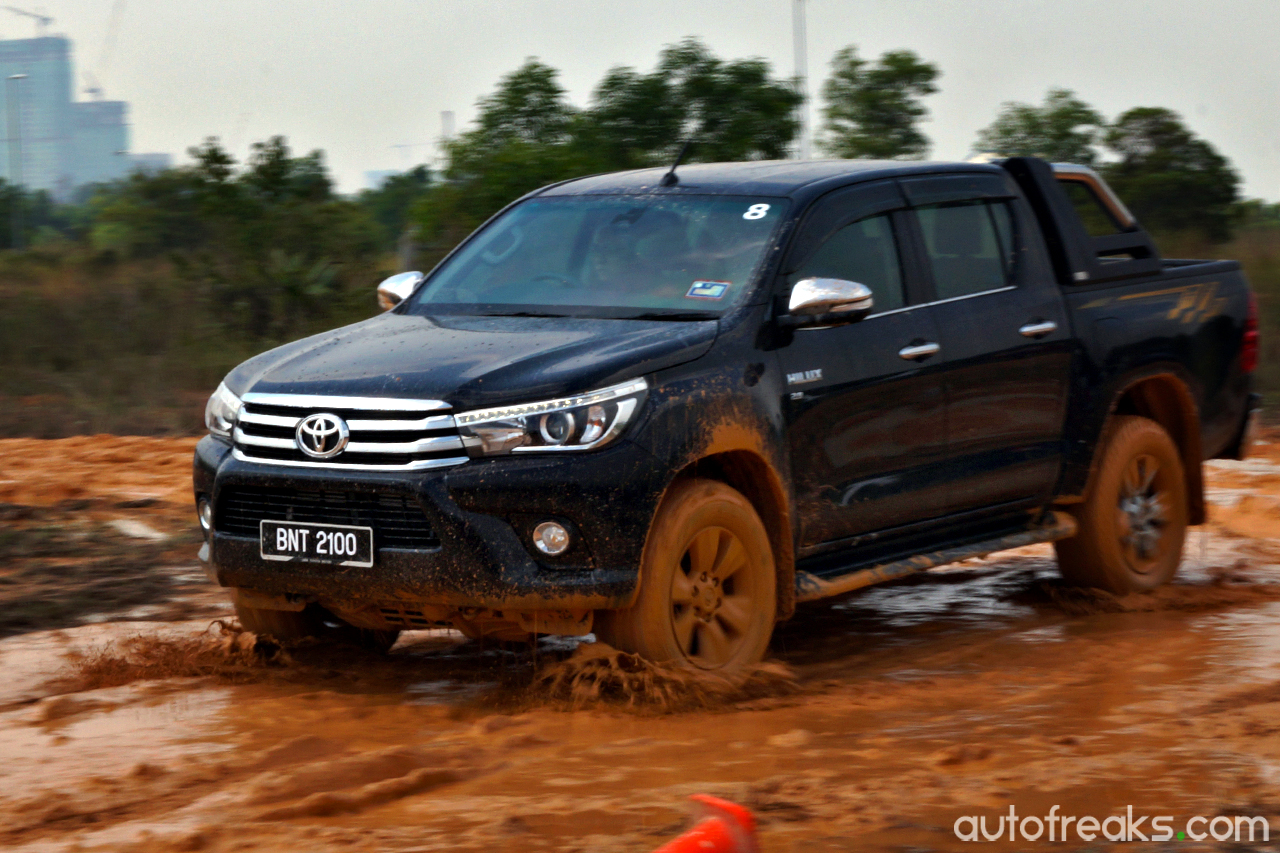
We will definitely be looking forward to sample the new Hilux and Fortuner for a longer period to better gauge them. After all, with excellent products from Ford and Mitsubishi, the Hilux and Fortuner both have very large shoes to fill. Stay tuned for our full review!
Toyota Hilux & Toyota Fortuner First Impression Photo Gallery
Other posts by AF Newsdesk

